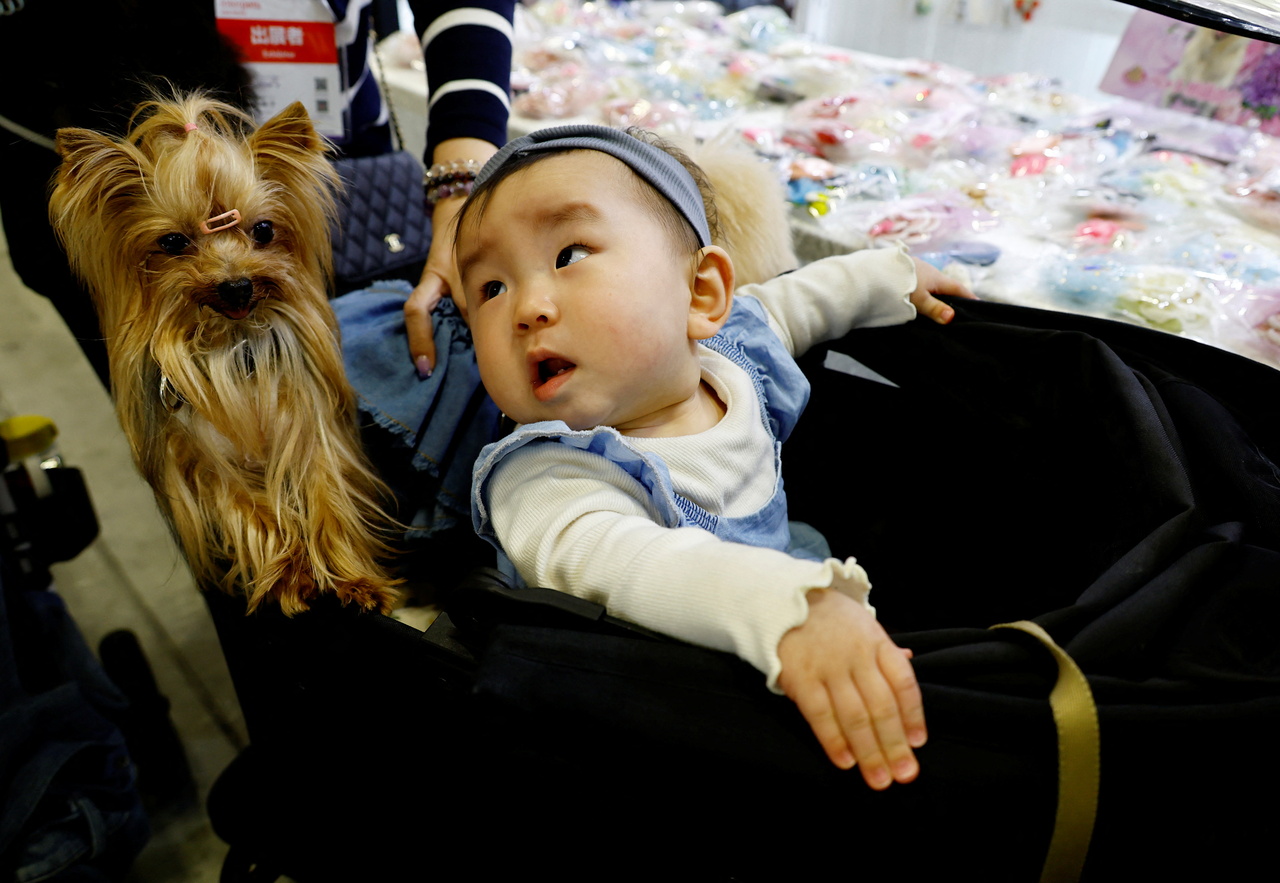Japan needs more babies, so it's helping to pay for costly IVF
Sign up now: Get insights on Asia's fast-moving developments

Japan's experience will serve as a test case for advanced economies facing declining birth rates.
PHOTO: REUTERS
Follow topic:
TOKYO (BLOOMBERG) - The wait to see the doctor at Japan's popular fertility clinic Saint Mother Hospital just got longer.
Starting Friday (April 1), public health insurance will reimburse 70 per cent of the costs of advanced fertility treatments as part of the government's attempt to halt a decline in one of the world's fastest-aging populations.
Dr Atsushi Tanaka, doctor and director of Saint Mother in Kita Kyushu, southern Japan, expects more patients at his clinic, already packed with couples seeking treatments such as in-vitro fertilisation (IVF) which previously cost over 500,000 yen (S$5,561) per cycle - more than the average household's monthly income.
"I think we'll see a huge number of patients," he said, adding that nationwide IVF attempts may even double.
Yet Dr Tanaka and other specialists say this won't be enough to reverse Japan's demographic decline, with patients still facing considerable costs, and insurance coverage excluding procedures such as genetic screening and the use of donor eggs.
With the number of women of child-bearing age dropping off in the coming years, they said, the government needs to do more.
Japan's experience will serve as a test case for advanced economies facing declining birth rates.
While free, or mostly free, IVF treatments are already available in a handful of countries including Denmark and France, Japan is the biggest economy to subsidise most costs for such treatments.
It already has one of the world's biggest number of women trying IVF. One in 14, or about 7 per cent of babies, were conceived through IVF in 2019, compared with 2 per cent in the US.
Yet its birthrate still hovers around 1.3, far below the 2.1 rate the OECD says is needed to sustain a stable population.
The move is the latest attempt to encourage younger people to have babies. Over the past decade, it has expanded financial subsidies for daycare and monthly allowances to families with children.
Japan's childcare leave policies are already among the most generous in the world, although few fathers take full advantage of what's offered, due to social and work pressure.
The government had already offered some financial assistance to lower-income couples seeking fertility treatment, but the latest change aims to provide access for a broader population seeking IVF, including methods such as injecting sperm into the uterus during ovulation and the use of frozen embryos.
Cost concerns
Policymakers hope the insurance coverage will encourage couples, who are grappling with years of low wages amid a weak economy, to try treatment sooner.
"It's good that it will lower the bar for people in their early 30's who need IVF treatment but were waiting for their bonus payments," said Mr Yuko Imamura at Health and Global Policy Institute, a Tokyo-based independent think-tank focusing on health policy.
Yet for Ms Yuki Yano and her husband, who have been trying to conceive for a few years, treatments such as IVF are still too expensive. Even with insurance coverage, they may need to pay around 150,000 yen per cycle.
"The two of us are barely making ends meet as it is, and we don't have the money to pay hundreds of thousands of yen for IVF," said the 31-year-old.
For now, she is sticking to Clomid, a drug which helps stimulate ovulation. Since suffering an ectopic pregnancy that required the removal of one fallopian tube, she has found treatment stressful, particularly when her husband - a long-distance truck driver - is away during peak fertility days.
"It's hard, to be honest. And I just get older in the meantime."
To pay for the new coverage, the government has set aside 17.4 billion yen in the budget for the fiscal year that began on Friday. Analysts say it's hard to say whether the spending will pay off.
South Korea's birthrate continues to decline despite expanded public insurance coverage of fertility treatments, although some studies on countries such as Denmark are more encouraging.
Investors have tempered their expectations. The 2020 announcement of the plan by then-Prime Minister Yoshihide Suga triggered a spike in shares of Aska Pharmaceutical Holdings, which produces estrogen shots, and Fuji Pharma Co, another producer of hormone treatment. But both have since retreated, underperforming the benchmark Topix index.
Some say there's room to do more. Saint Mother's Dr Tanaka said the government should consider helping to pay for egg freezing, a costly treatment not covered by public insurance.
Companies like Google have offered female employees the chance to freeze their eggs, giving them greater freedom to pursue careers and family planning.
"The government is telling women to work. But they're also telling women to have children sooner, and isn't that contradictory? This is a solution," he said.
He also supports insurance coverage of methods such as time-lapse monitoring or pre-implantation genetic testing, technologies credited for higher success rates.
But many women say it's not just about medical treatment. A recent study by Sumitomo Life Insurance Co found that a majority of Japanese women thought it was impossible to pursue both fertility treatment and work.
Ms Megumi Takai, 33, plans to leave her full-time office job soon, and work part time to focus more on fertility treatment. She said many women were unable to use time off for doctor appointments, feeling it was too sensitive a subject to bring up at work.
"I wish society were more supportive about this, and that everyone could take time off when needed," she said.

